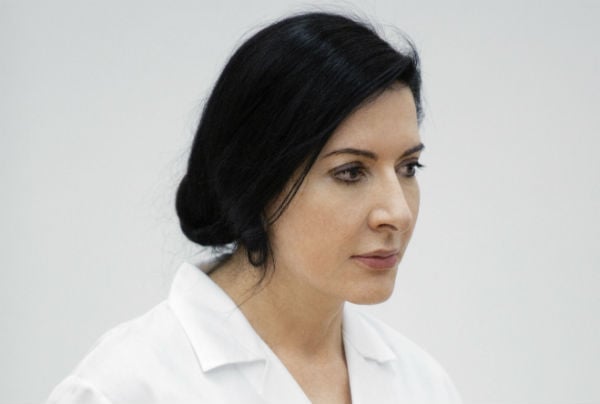Art & Exhibitions
In London Stunt, Marina Abramović Delivers an Empty Room
The artist previews her 512 Hours (of nothing) at the Serpentine Gallery.

The artist previews her 512 Hours (of nothing) at the Serpentine Gallery.

Coline Milliard

When, in 1989, Marina Abramović was asked about the future of performance art, she replied: “art without objects, just the direct transmission of energy between the public and the artist.” She has now come closer than ever to her own definition. For the duration of her eagerly anticipated solo project 512 Hours at the Serpentine Gallery, which was previewed to the press this morning, the self-styled “grandmother of performance art” will open the gallery every day at 10 a.m., and remain present in the space, alongside up to 160 audience members invited to experience her presence. Abramović and the flock of invigilators aside, the gallery is to be left bare. No recording, mobile phones, or electronic devices are to be allowed—the idea here being to invite viewers to live in pure present.
Abramovic calls 512 Hours her most “radical” project—a bold statement from an artist whose entire career has involved testing the limits of her own body, and the way it can be interacted with by an audience. As a teaser for the new piece, Abramović roamed around the crowd of journalists, picking a few that she positioned facing the walls. This is only one of the potential scenarios. Many others might emerge during the exhibition, although what exactly they might be will only reveal itself during the course of the exhibition. “I really wish I could tell you what I’m going to do,” she said during the press conference, “but I don’t know and I don’t want to know.”
The link to Abramović’s critically acclaimed 2010 exhibition “The Artist is Present” at the Museum of Modern Art is obvious, although the conceit markedly looser. In New York, alongside a more traditional retrospective shown upstairs, the public was invited to take turns sitting at a table with Abramović, and peer into her eyes. No such setup governs the artist-viewer interaction in London; no historical material frames the encounter. Beside the authority granted by the institution itself, it is entirely up to the artist to conjure up what she describes rather tantalizingly as a “charismatic space.” Yet paradoxically—and judging only by this morning’s short demonstration—the one-to-one aspect of “The Artist Is Present” appears to have been somewhat diluted.
In interviews that followed her MoMA outing, Abramović talked about how she acted as “a mirror” for her sitters, allowing them to build a space to confront their inner being. Many of the thousands of visitors that visited MoMA left mesmerized, others broke down, and the show quickly became a national phenomenon. People slept in the streets to secure a moment with the artist. Groups of die-hard fans ganged up to talk about their experience.
Will the London piece trigger such a wave of public enthusiasm if the artist only fleetingly interacts with audience members? The success of much of Abramovic’s works rests on their very direct form of physicality. It is an almost fundamental condition for her work. Whether or not this can be convincingly implemented for 160 people quasi-simultaneously will become apparent in the coming months.